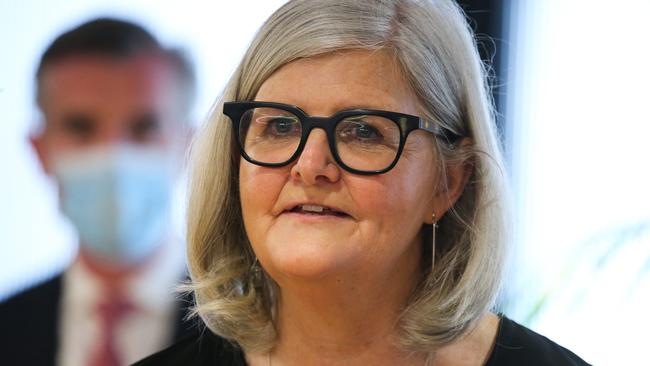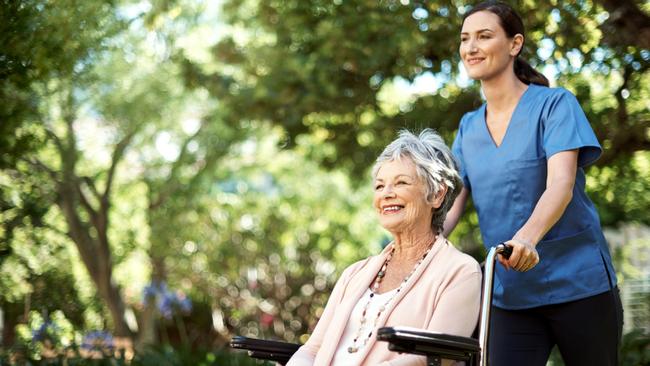Why the 30 per cent pay gap between men and women needs to be closed
New research has revealed how your choice of career can severely impact on the amount of money you earn and why this needs to change.
At Work
Don't miss out on the headlines from At Work. Followed categories will be added to My News.
Workers with a university degree or above earn 30 per cent less per hour in female-dominated industries compared to sectors with a majority of males, shocking new research has revealed.
Women working in areas such as health care and social assistance, education, hospitality and retail are making tens of thousands less than men a year who are employed in manufacturing, trades, transport, mining and construction.
Impact Economics found the average hourly rate for someone with a university degree in a female-dominated industry is $39.20, compared to $51 in a male-dominated industry – creating the huge 30 per cent difference.
Yet, the economic research conducted for gender equality group Chief Executive Women (CEW) found that halving the wage gap between men and women could fix Australia’s current skills shortage and create 500,000 additional jobs
Job vacancies hit a record high of 423,500 in February this year, yet the gender pay gap remains persistent with females earning a whopping $25,800 less on average than males.
Closing the gender wage cap completely would add an extra one million workers and also help out Aussie businesses that have been battered by skills shortages brought on by international borders being closed, the CEW report found.
Stream more finance news live & on demand with Flash. 25+ news channels in 1 place. New to Flash? Try 1 month free. Offer ends 31 October, 2022 >

However, skilled female workers would only become available if the next government invests in more affordable childcare, improved access to paid parental leave and boosts higher wages in crucial industries.
All these measures would be worth hundreds of billions to the economy by returning women to the workforce, CEW argued.
Sam Mostyn, CEW president said it is vital to increase women’s workforce participation for Australia’s economic prosperity, describing females as the country’s “most untapped resource”.
“We are facing record job vacancies and growing skills shortages, yet we have a ready workforce, which is highly educated and skilled that is sidelined by powerful barriers to their participation,” she said.
“Halving the workforce participation gap between men and women would unlock half a million workers. Australia cannot afford to lag behind as a nation on women’s workforce participation.
“We must shift from piecemeal policies that deal with individual pressures and change the way we think about our economy and investment in social infrastructure. We must focus on policy that will enable women to participate in decent, paid work and to help solve Australia’s skills shortage.”

The member organisation of more than 800 female leaders in business and not for profits has called for the childcare subsidy to be increased to 95 per cent for low income households earning up to $80,000 with a minimum of three days a week for families.
Both major parties have rolled out new policies for early childhood education recently with Labor offering a subsidy of up to 90 per cent of childcare for families earning up to $530,000 per year, while the Liberal government’s current system supports those earning up to $354,000.
The CEW report also found that making workplaces safe from sexual harassment was also key to getting more women into work.
The wage gap didn’t just exist at the university level either. The report found workers with a Certificate III/IV earn 36 per cent less per hour in female-dominated industries compared to male-dominated industries.
This means a difference of women being paid $29.80 an hour on average, while men receive $40.40 per hour.

Workers with no post-school qualifications also make 19 per cent less per hour in female-dominated industries compared to male-dominated industries.
Australia finished equal last in a ranking of the gender pay gap across six countries, a major international report found last year.

Dr Angela Jackson, lead economist at Impact Economics, said at a time of critical skill
shortages, Australia’s failure to keep pace with our international peers in terms of women’s
economic participation is hurting our economy.
“Reforms to lift female participation are urgently needed to lift our game to meet current and future skill gaps,” she said.
By 2026, the economy will require an additional 1.2 million jobs too with female-dominated industries expected to need the most staff, estimated the National Skills Commission.
Originally published as Why the 30 per cent pay gap between men and women needs to be closed





